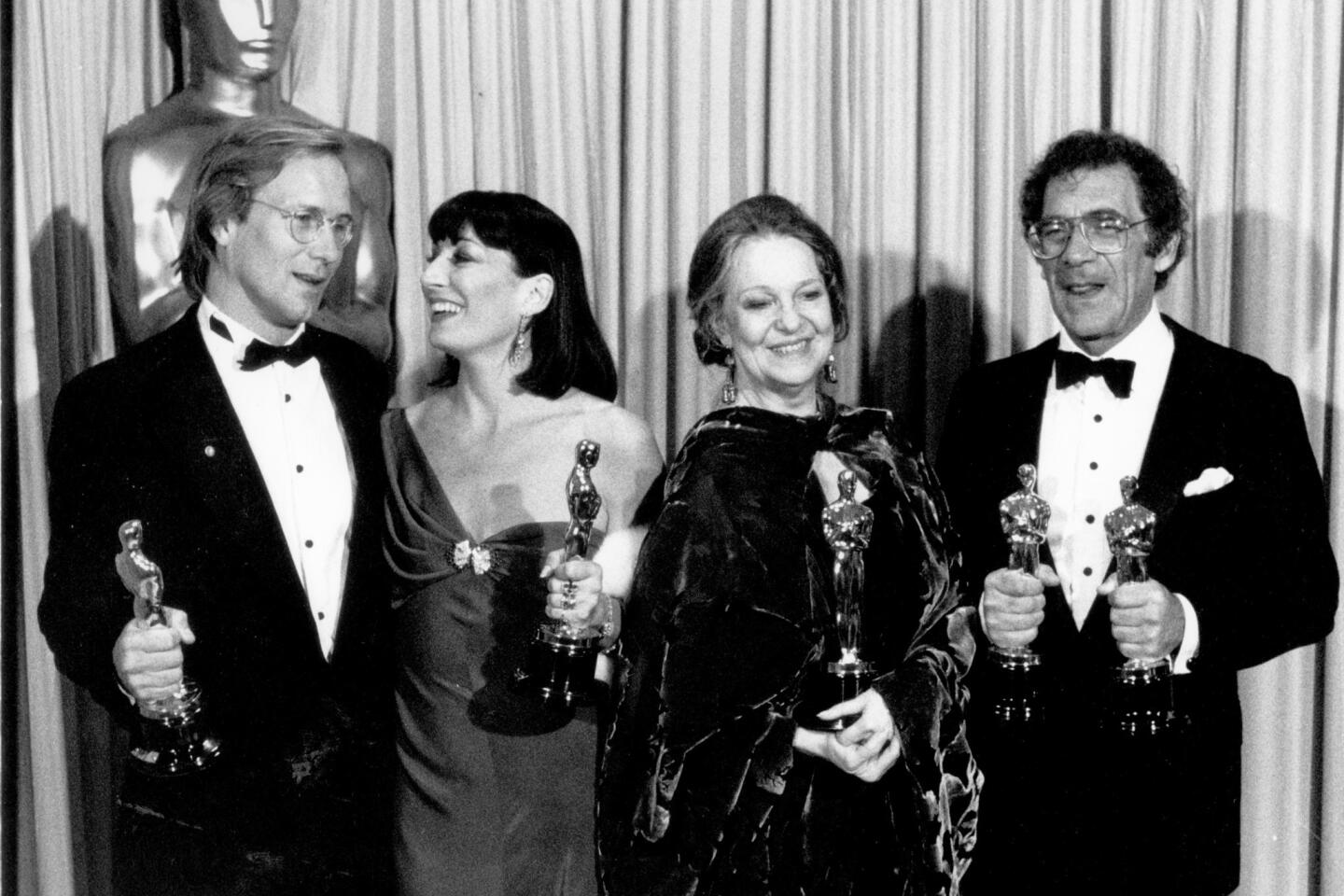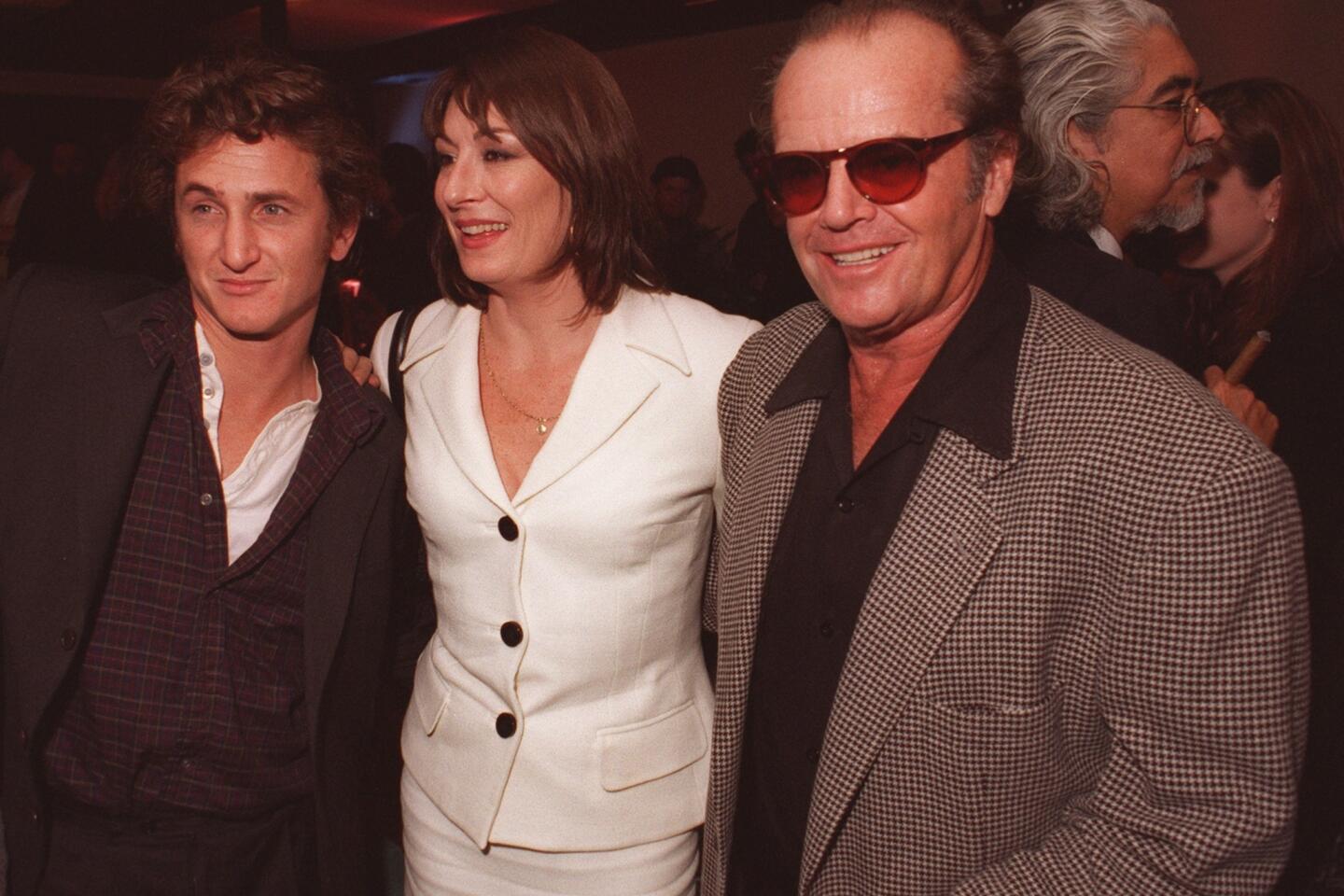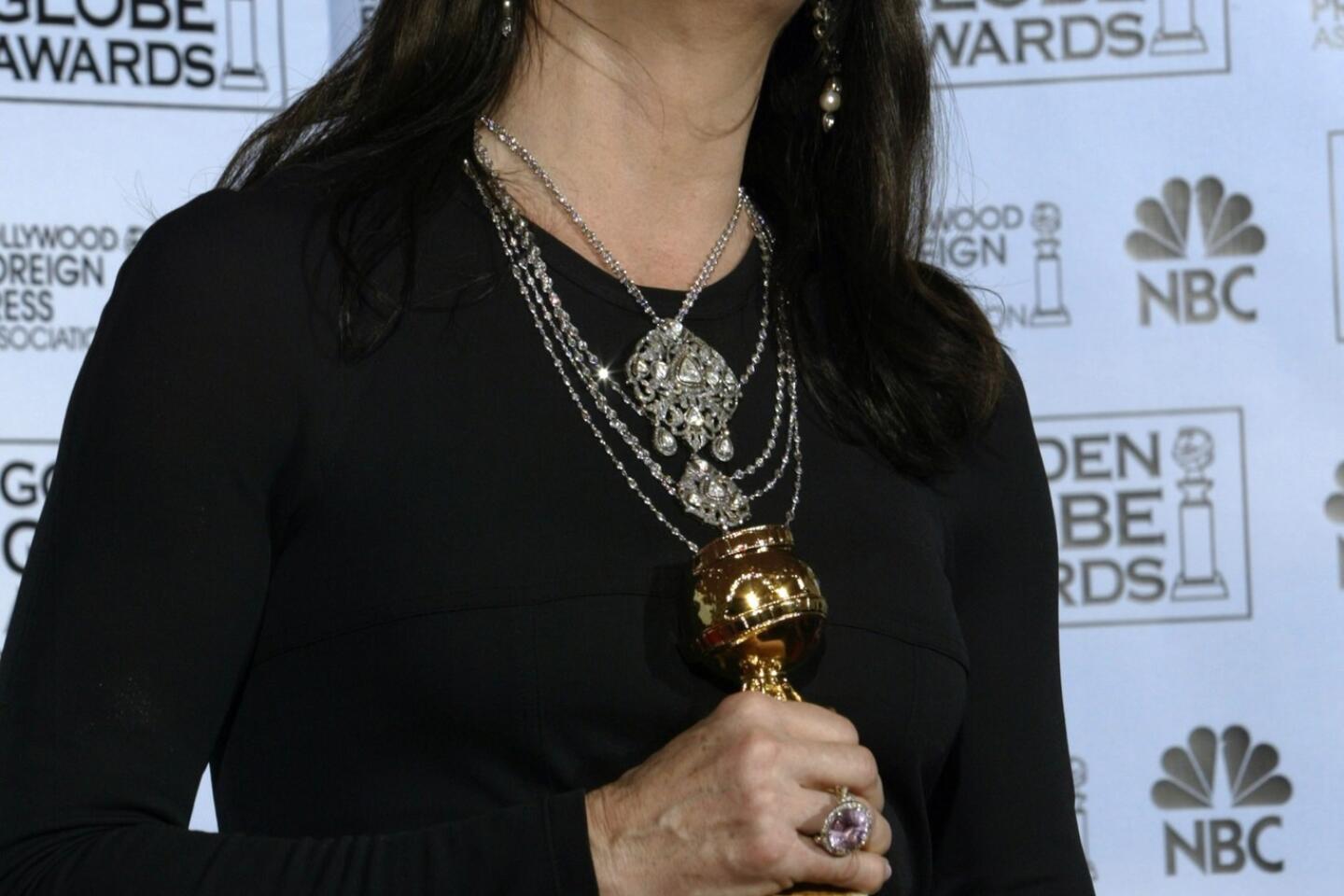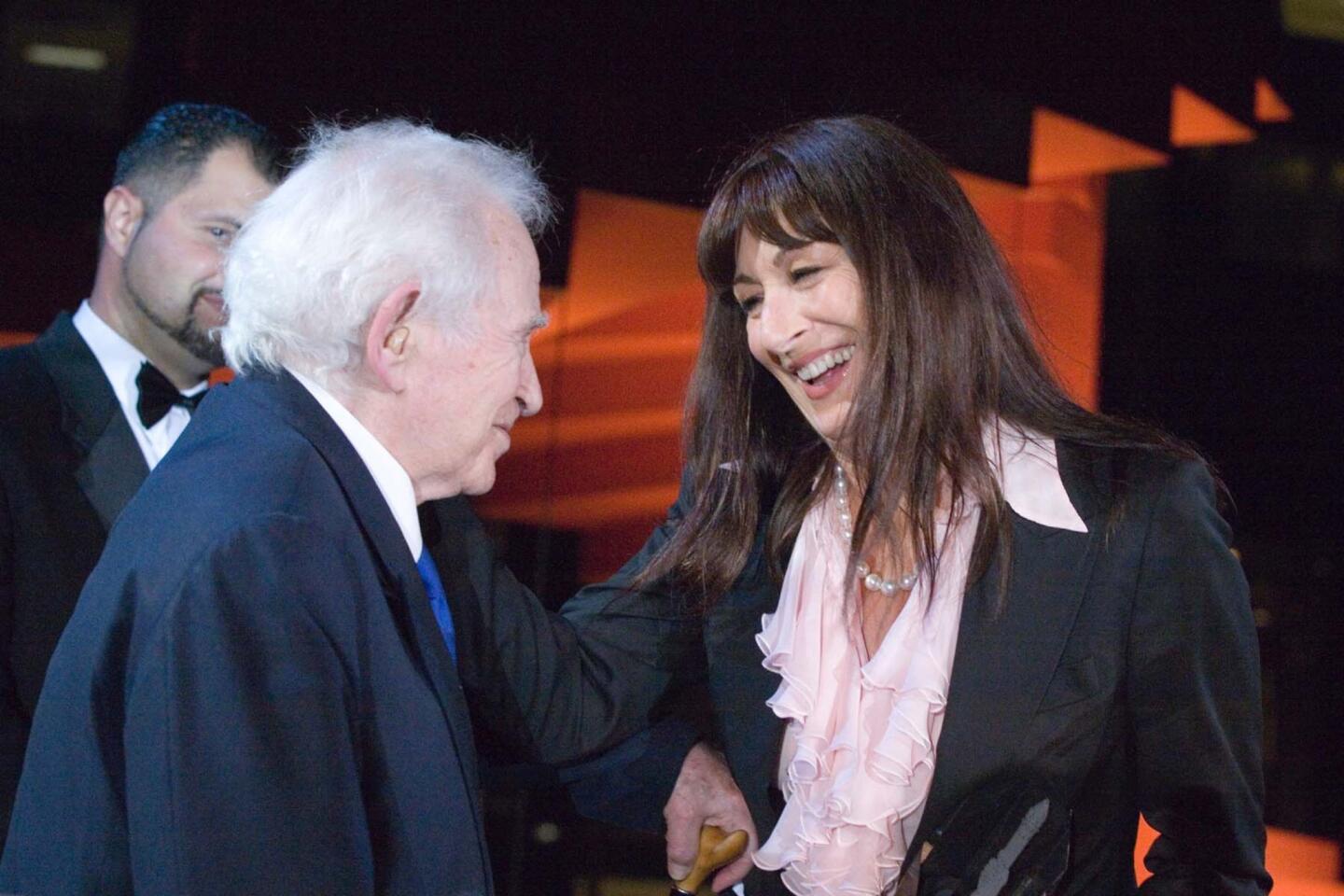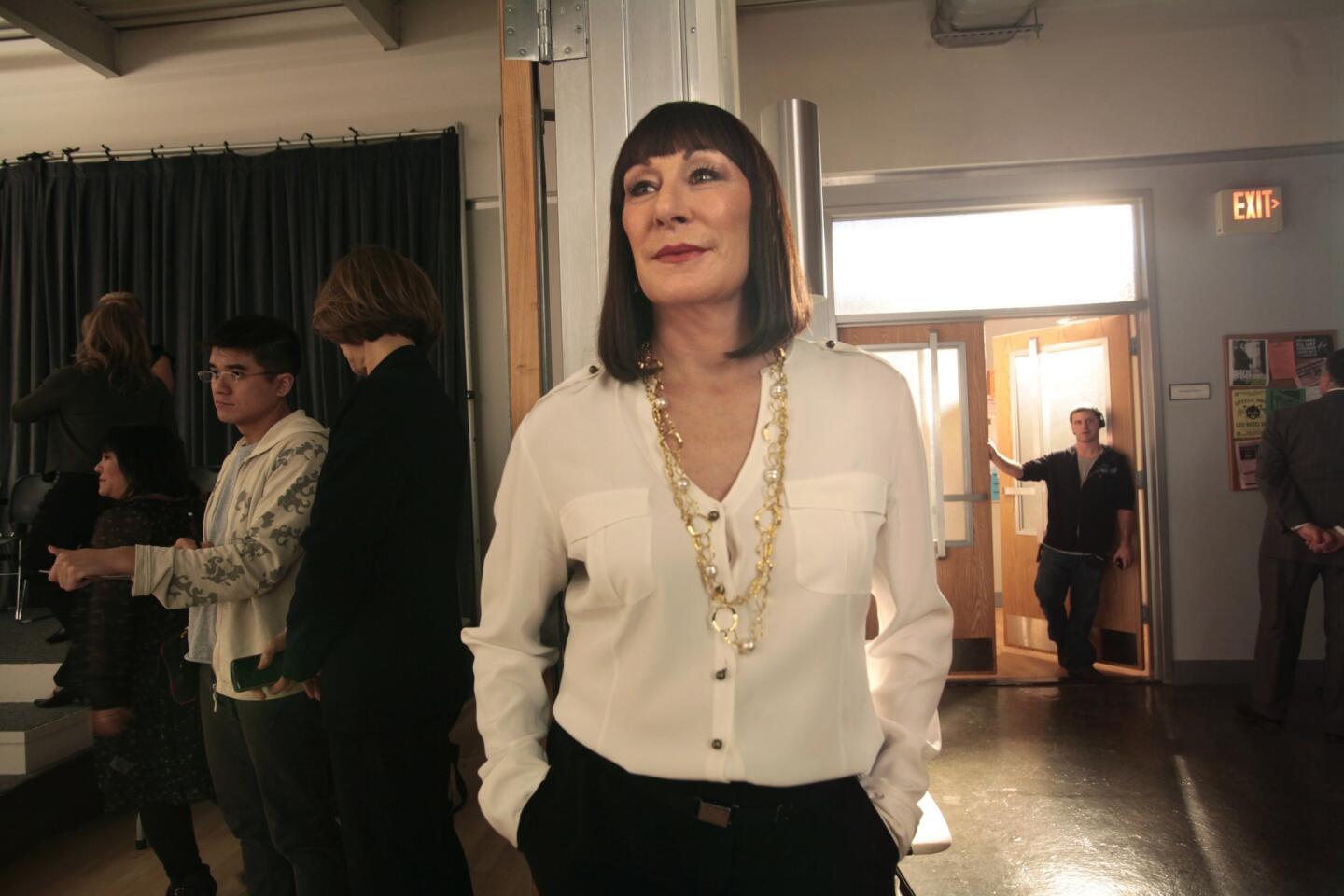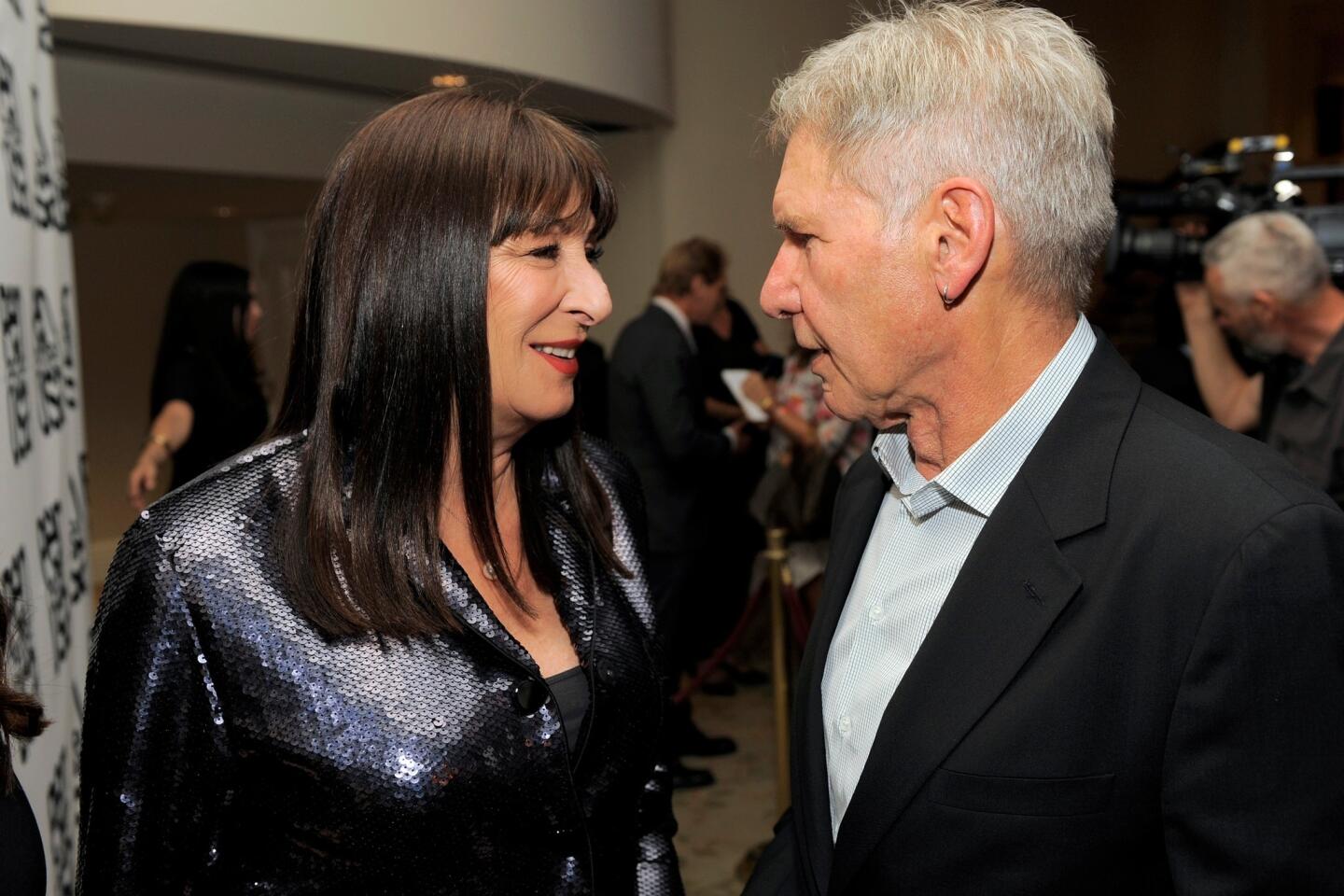Anjelica Huston discusses her memoir, ‘A Story Lately Told’
- Share via
As a member of Hollywood royalty, a fashion icon and an Academy Award-winning actress, Anjelica Huston has led a full life — so much so that she’s taking two books to tell her story. The first, “A Story Lately Told” (Scribner: 272 pp., $25), recounts her childhood in western Ireland, her teen years in London and her days as a model in New York City. (Her follow-up, “Watch Me,” is expected in fall 2014.)
Raised by her swashbuckling filmmaker father, John Huston, and her elegant mother, onetime ballerina Enrica Soma, on a sprawling Irish estate called St. Clerans, Huston, now 62, was surrounded by larger-than-life personalities and colorful characters from an early age — from the actors, authors and nobles who constantly visited to the many and varied caretakers and tutors who populated her home.
The trend would continue through her teen years in swinging London, where she understudied Marianne Faithfull on a production of “Hamlet,” and during her modeling career in 1970s New York, where she fell in love with the talented but troubled photographer Bob Richardson and graced the pages of Elle and Vogue.
Huston recently spoke to The Times about her life and writing during a stop along her book tour. At 7:30 p.m. Monday, she will be discussing her memoir with novelist Colm Tóibín during “An Evening With Anjelica Huston,” part of the Library Foundation of Los Angeles’ ALOUD series, at the Wilshire Ebell Theatre. Tickets are $25; more info at www.lfla.org/aloud.
Who inspired you to write?
My parents primarily, because they started it all. My father wrote on every movie he made; he was primarily a screenwriter. My mother was also a very beautiful writer and very erudite and read constantly. I remember long conversations about books and writers. My mother gave me Colette when I was 13 years old, which is pretty fabulous, I think.
My earliest books were “Grimms’ Fairy Tales,” “The Secret Garden,” “Orlando the Marmalade Cat,” all the Louisa Alcott books, Tolkien. We had a very extensive library when we were children, and because we were in the wilds of Ireland, I think that was a very good thing.
The descriptions in your book are very vivid; how do you recall those memories with such detail?
It’s something that comes to me. I’ve been trained to do that as an actress. We have this thing called sense memory that we do in class — I don’t go to class anymore so much, but it’s just a way of putting yourself back there. And that functions well for me as a writer. Also I think probably because Ireland was mercifully devoid of extraneous distraction.Your young life was full of lively characters. Was it a challenge to balance your own story with theirs?
Not really, because I have my place. You know, pawns have their place on the chessboard.There’s a recurring image in the book of gazing into a mirror and the act of self-reflection. Is that what writing a memoir feels like to you?
Yes, and you see all the bumps as well as the stuff you like. The challenge is to give everything its moment and to acknowledge all of the feelings — to, if possible, draw a conclusion by which you can move forward and forgive yourself, forgive others and move on. I think writing a memoir is very much about sharing who you are, who you were, claiming it and in a way setting it free.
You seem to have a knack for landing in places at just the right moment in history: London in the ’60s, New York in the ’70s. Is that coincidence, or did something draw you to those places?
I think it was coincidence, although I consider myself sort of the Zelig of my time. There were certainly fortunate aspects to landing in New York in the ’70s and living at the Chelsea Hotel and kind of encountering all those characters.
New York was not a great place to not have money. At the same time, I’m glad that I was at the cusp of all that interest and activity, that I exposed myself to it. If given the chance, I think it’s better to open oneself up to the vagaries of life. It’s easy to hide from all of that stuff, so I’m grateful in retrospect that I embraced it.
Many people think of you as an actress first and foremost, but you didn’t embrace acting until later in life.
I’d made a film with my father when I was 17 years old, “A Walk With Love and Death.” It was an unpleasant experience for both of us, and I wasn’t crazy about the idea of putting myself up for more of that. I was feeling pretty fragile at the time: My mother had been killed in a car crash, I was suddenly on my own, by my own volition. My father was a strong, imposing man, and at the time I felt that he was critical and that he was not happy with my evolution, and so it was really a self-protective act as much as anything else that I went into modeling and didn’t continue acting at that point.
Why did you decide to tell your story in two parts?
Initially, I think it was just there was too much information [for one book]. So it sort of naturally fell in place. By the time I came to Los Angeles, that was a big change in my life. It was where I was to live for the next 35 years or so, and this seemed to be a very natural kind of cutting-off point. It’s still the same book as far as I’m concerned, just a continuation, really... with another cast of characters.
ALSO:
L.A. Times’ holiday books gift guide
Writers recommend: Reading across gender lines
42,008 new novels were completed during NaNoWriMo
More to Read
Sign up for our Book Club newsletter
Get the latest news, events and more from the Los Angeles Times Book Club, and help us get L.A. reading and talking.
You may occasionally receive promotional content from the Los Angeles Times.
